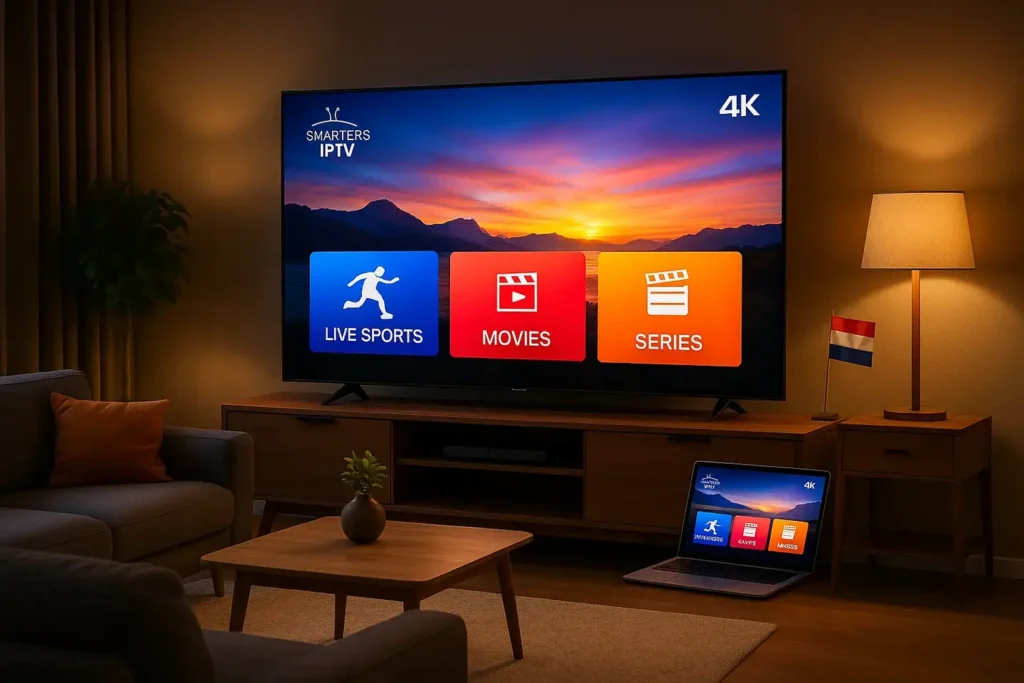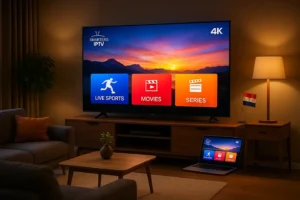The IPTV Revolution: Unlocking a World of Effortless Entertainment
In living rooms from Lisbon to Los Angeles, a quiet revolution is redefining the very nature of television. The era of being tethered to rigid cable schedules and expensive, bloated packages is conclusively over. Internet Protocol Television, or IPTV, has emerged not merely as an alternative but as the dominant force in modern media consumption. Its ascent across Europe and America is a story woven from threads of technological empowerment, cultural connectivity, and, most importantly, breathtaking simplicity. This transformation speaks to a universal desire for choice and control. We are no longer passive recipients of broadcast schedules but active curators of our own entertainment universe. The importance of IPTV lies in its profound ability to meet the unique demands of two diverse yet interconnected markets. It serves as a cultural bridge for Europeans and a liberating force for American cord-cutters. And at the heart of its widespread adoption is a single, powerful feature that makes it the ideal choice for millions: its unparalleled ease of use. This article will explore the multifaceted role of IPTV and demonstrate how its intuitive design is dismantling the final barriers to a superior viewing experience.

The Cultural Tapestry: IPTV’s Role in Europe
Europe presents a mosaic of distinct cultures, languages, and traditions. IPTV’s significance here is deeply rooted in its capacity to honor this diversity while providing a unified platform. For the British expatriate enjoying retirement on the Spanish coast, IPTV is a lifeline to familiar programming like the BBC and ITV. A Polish family building a new life in Ireland can watch TVP Polonia to stay connected with news and entertainment from home. This technology effortlessly dissolves the geographic and broadcasting barriers that once defined television. It directly addresses the profound human need for cultural connection among diaspora communities. The passion for sports also unites the continent. The English Premier League and UEFA Champions League command a massive, cross-border following. IPTV meets this demand with dedicated sports packages that are often more affordable and comprehensive than those offered by local cable providers. A fan in Italy can cheer for a German football team with the same ease as a local. In France, the rich legacy of cinema is celebrated through IPTV services offering extensive video-on-demand libraries of French films. In Germany, viewers enjoy seamless access to both public broadcasters like ARD and ZDF and private channels. The multi-language support of leading IPTV services is a cornerstone of their appeal. It is common for a single movie or series to offer audio tracks and subtitles in several languages, actively supporting the plurilingual identity cherished across the European Union. The economic reality of cost-of-living pressures makes the affordability of IPTV a significant factor. Consumers are actively seeking to reduce monthly expenses without sacrificing quality, and IPTV presents a cost-effective and flexible solution. The widespread penetration of high-speed broadband, from major cities to rural villages, has created the perfect infrastructure for this technology to flourish. Ultimately, the importance of IPTV in Europe is a narrative of cultural preservation, economic pragmatism, and technological empowerment, all working in harmony.
The Cord-Cutting Phenomenon: IPTV’s Rise in America

Across the Atlantic, the IPTV narrative is synonymous with the “cord-cutting” revolution, a powerful movement driven by a desire for freedom, customization, and value. The American cable and satellite industry, long defined by restrictive “bundles,” forced customers to pay for dozens of channels they never watched. IPTV emerged as the powerful antidote to this frustration, offering unprecedented à la carte freedom. The American viewer is now empowered to build a personalized entertainment lineup that aligns perfectly with their specific interests, be it sports, movies, or family programming. The high cost of traditional cable has been a primary driver for this mass migration to more affordable IPTV options. Families can save hundreds of dollars annually by replacing a monolithic cable bill with a tailored selection of streaming and IPTV services. This economic incentive is incredibly powerful in a competitive consumer market like the United States. The earlier dominance of streaming giants like Netflix and Hulu fundamentally conditioned consumers to on-demand content; IPTV is the logical and seamless evolution, integrating live television into the streaming paradigm. It perfectly satisfies the American appetite for instant gratification and total control over the viewing schedule. Sports, a cornerstone of American culture, have found a new home in IPTV. Services offer comprehensive packages for the NFL, NBA, MLB, and NHL, often including coveted out-of-market game access. This is a transformative development for fans who have relocated away from their home team’s city. The traditional model of regional sports networks is being decisively disrupted by IPTV’s national and accessible offerings. Even local news, a vital source of community information, is being integrated into many IPTV services, ensuring viewers retain access to local weather, traffic, and emergency broadcasts. The flexibility to cancel a subscription at any time without facing punitive early termination fees is a cornerstone of the American IPTV appeal, standing in stark contrast to the long-term contracts of the past. The tech-savvy American population has readily adopted smart TVs and streaming devices like Roku and Amazon Fire TV, and IPTV apps are seamlessly integrated into these platforms, making the transition from cable utterly effortless.
The Defining Advantage: Unparalleled Ease of Use
While vast content libraries are the allure, it is the remarkable ease of use that truly solidifies IPTV as the ideal choice for a global audience. The journey begins with a setup process so simple it feels liberating. There are no technicians to schedule, no messy cables to run through walls, and no expensive equipment to rent. Typically, it involves nothing more than downloading a straightforward app from your device’s store. The user interface of a well-designed IPTV service is a masterpiece of intuitive design. Clean menus, logical categorization, and visually appealing thumbnails make navigation a pleasure rather than a chore. Finding content is a swift and satisfying experience, powered by powerful search functions that can locate shows by title, actor, or genre in an instant. The Electronic Program Guide (EPG) is the digital successor to the printed TV guide, but infinitely more powerful. A well-populated EPG provides days of programming information at a glance and allows you to instantly watch or schedule a recording with a single click. The ability to create a personalized “Favorites” list means your most-watched channels are always accessible within seconds, eliminating the endless scrolling through irrelevant options. For families, robust and easy-to-set-up parental controls offer essential peace of mind, allowing parents to restrict access to specific channels or content ratings with just a few clicks. The magic of cross-device compatibility cannot be overstated. You can start watching a movie on your living room television, pause it, and resume seamlessly on your tablet or smartphone in another room. This continuity provides a fluid and integrated entertainment experience that traditional TV cannot replicate. The principle of one-click playback is standard; you see a show, you click it, and it plays immediately. Features like pausing, rewinding, and fast-forwarding live TV have transformed the viewing experience, ensuring you never miss a pivotal moment in a sports game or a key line of dialogue in a film. Catch-up TV functionality allows you to watch shows that aired in the last few days automatically, even if you forgot to set a recording. Video-on-demand libraries are presented in clean, easy-to-browse formats familiar to any streaming user. The entire process, from registration and payment to managing your subscription, is handled through a simple online portal, emphasizing transparency and user control. This overarching simplicity is what makes the immense power of IPTV truly accessible to everyone, from tech novices to digital natives, making it the undisputed ideal choice for modern entertainment.
Conclusion: The Future is Simple, Streamlined, and On-Demand

The importance of IPTV in Europe and America is a testament to its ability to meet the evolving needs of the modern viewer. It has successfully answered the call for greater variety, enhanced affordability, and ultimate control. But its crowning achievement is delivering this powerful package through an experience of sublime simplicity. IPTV has taken the immense complexity of global content delivery and distilled it into an interface as easy to use as a light switch. It has removed the friction, frustration, and financial strain of legacy television systems. The revolution is final; the future of television is not just about what we watch, but how effortlessly we can watch it. IPTV has made a world of entertainment not just available, but readily, reliably, and effortlessly accessible to all.




